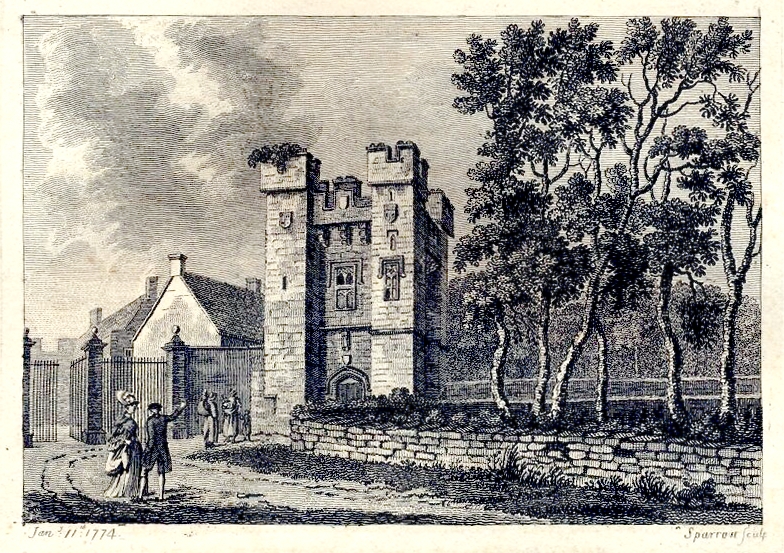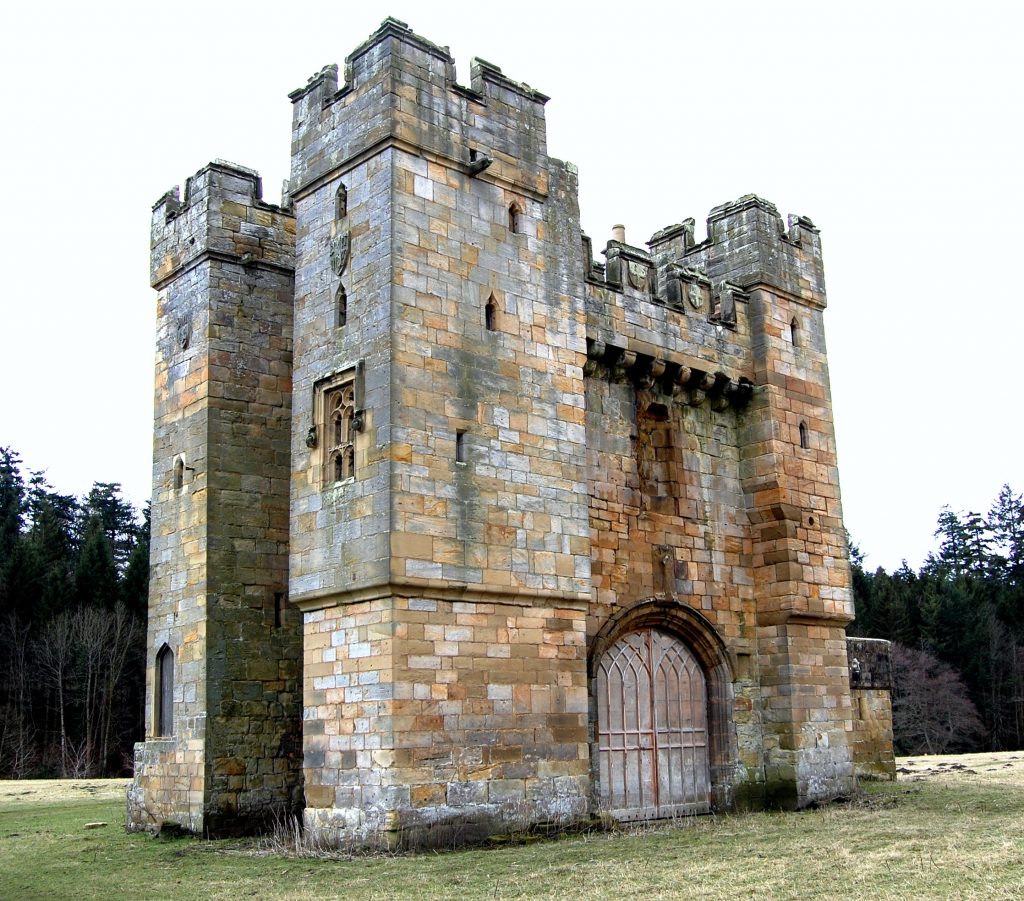Tanner, writing in 1744 comments: The site of this house was granted, 4 Ed. 6. to Ralph Sadler and Laur. Winnington.
Tate (pp.34-6) puts the date of this sale as 15 December 1550 and says it was then sold to Robert Brandling in the early seventeenth century. The Brandlings welcomed King James for two nights at Alnwick Abbey on 7 May 1617 as he travelled north into Scotland, so there must have been a house of suitable status present on the site at that date.
The Brandling family held the property for most of the seventeenth century, but by the early eighteenth century it was first mortgaged, and later sold, to John Doubleday. He built a house adjacent to the gatehouse constructed from the ‘ruins . . . which stood in his orchard, south of his pleasure garden’. Tate comments: ‘The only remains of this religious pile, is the court wall to the east . . . Adjoining to it, is an antient and strong tower, with four turrets, two at each end.’
Engravings made in the later eighteenth century show the Alnwick gatehouse with Doubleday’s house adjacent.

John Doubleday died in 1751 and his son Michael succeeded him, dying without issue in 1797. The abbey site was purchased by the Duke of Northumberland in 1800 and remains part of the estate to the present day.
It is said that the whole site was levelled shortly after 1800, including Doubleday’s house, leaving only the gatehouse. There were no indications of buildings present when the site was excavated by W H St John Hope in 1889, and he commented that: ‘a perfectly level green field lay between the gatehouse and the River Alne, where the abbey of Alnwick had formerly stood‘.

The abbey gatehouse tower continues to stand in splendid isolation in largely featureless pasture/parkland.